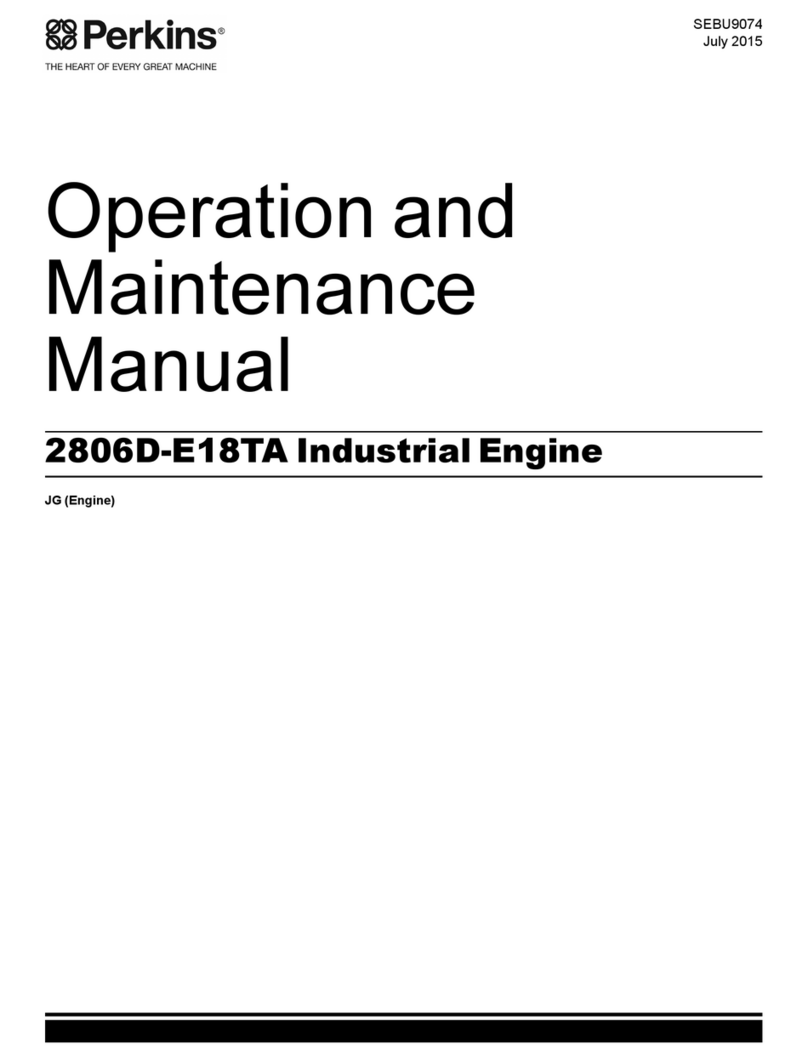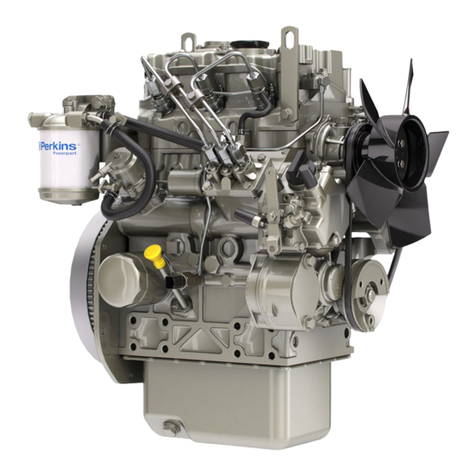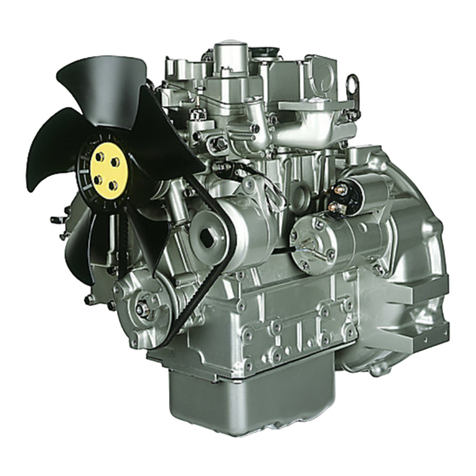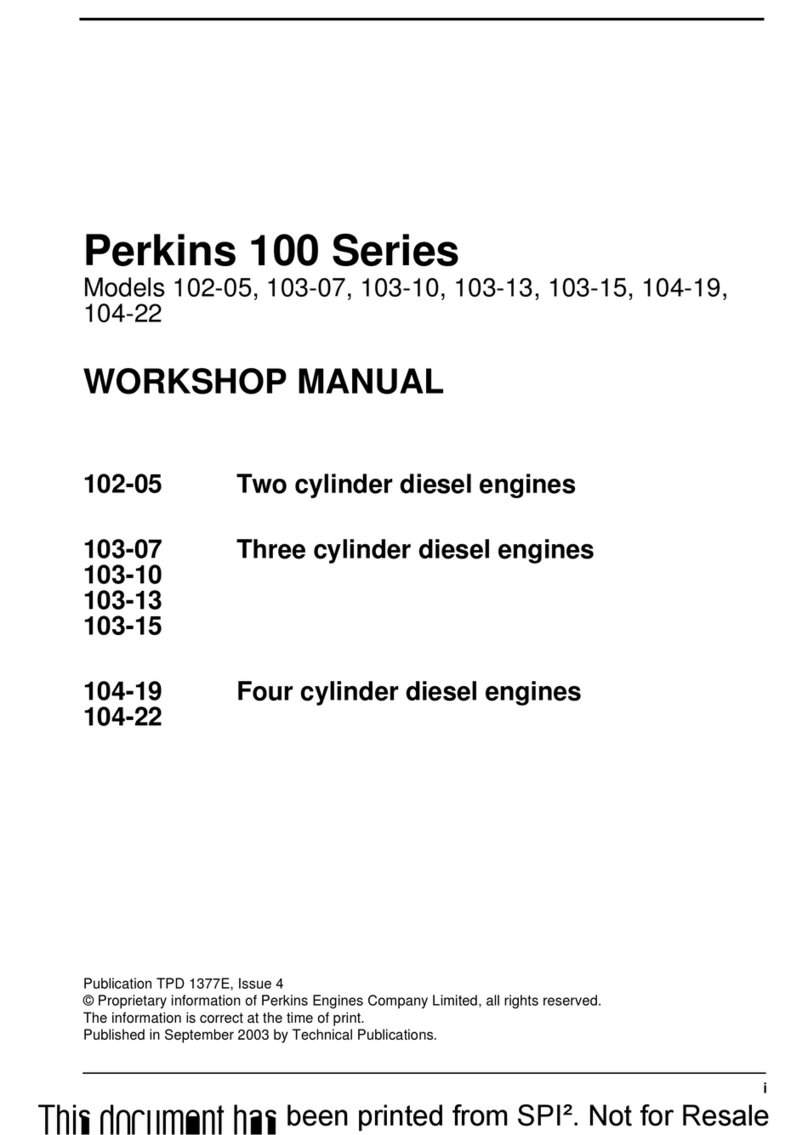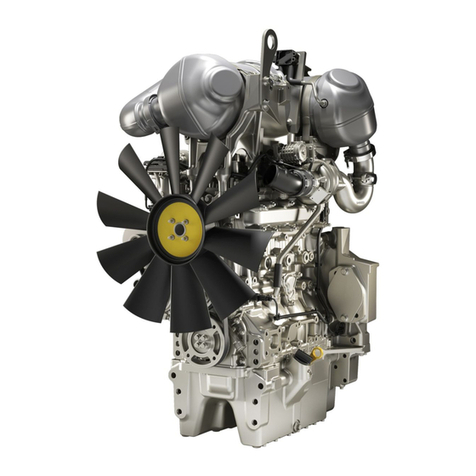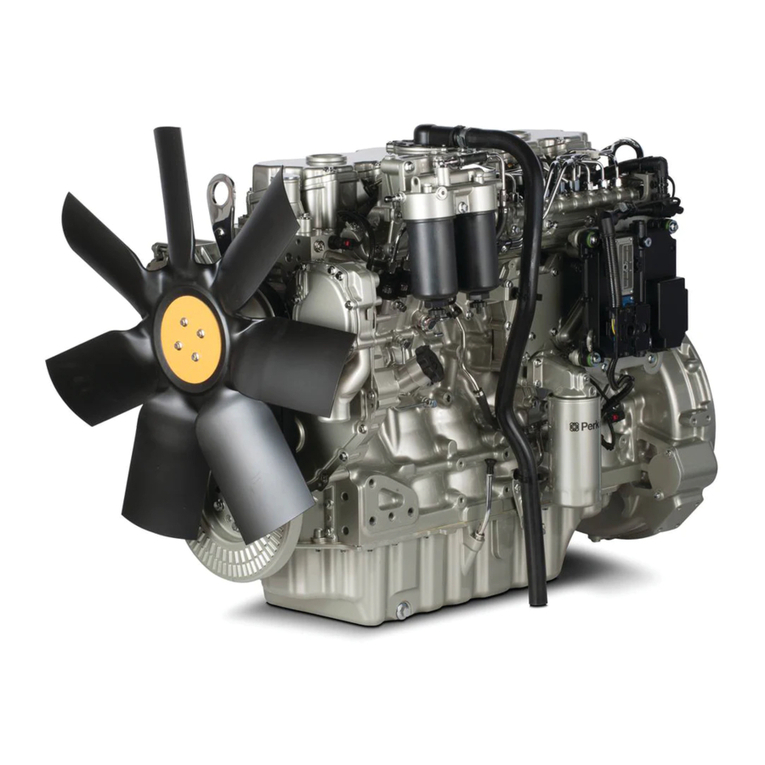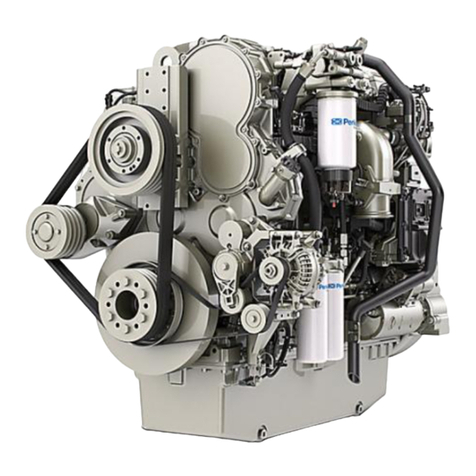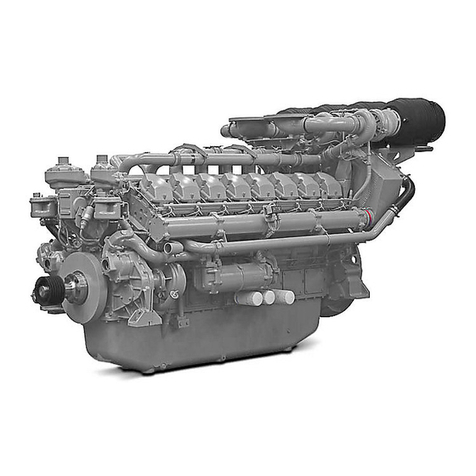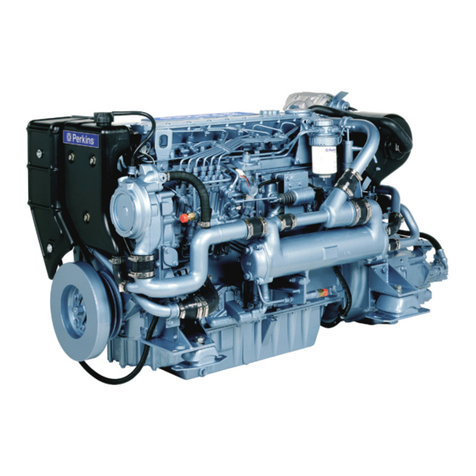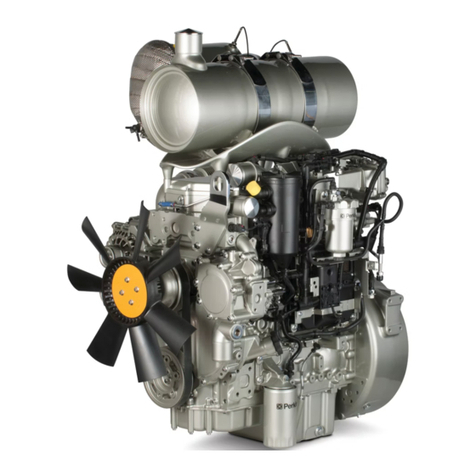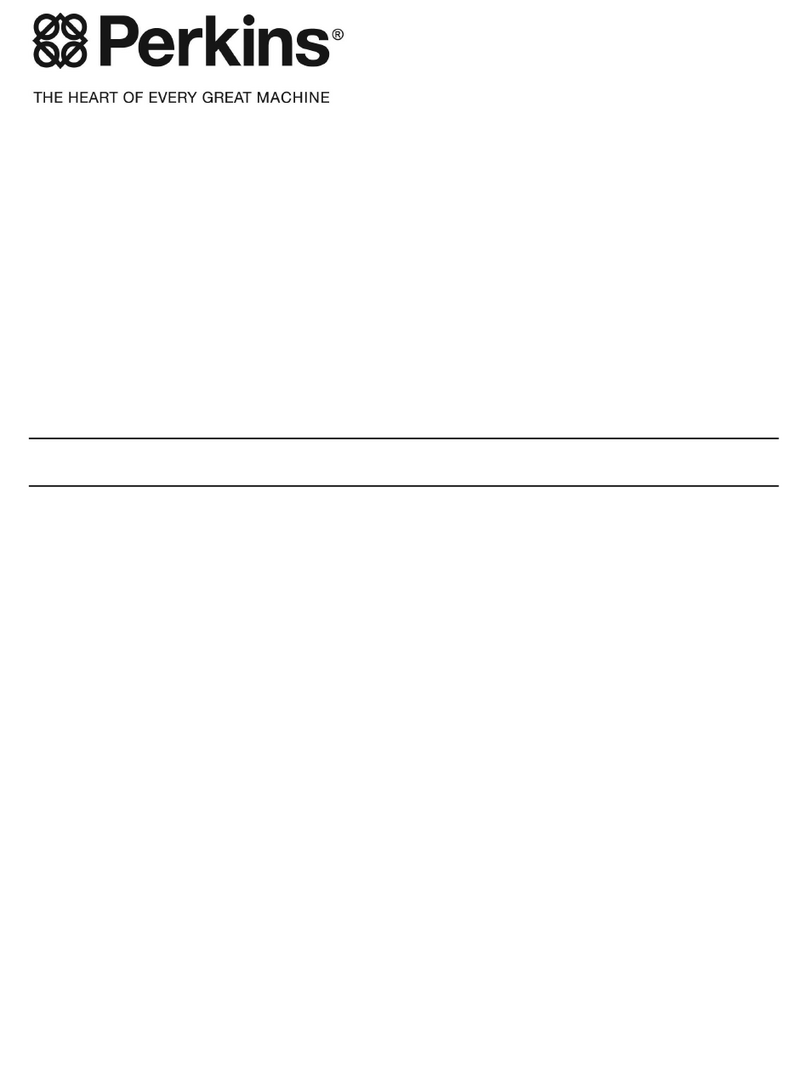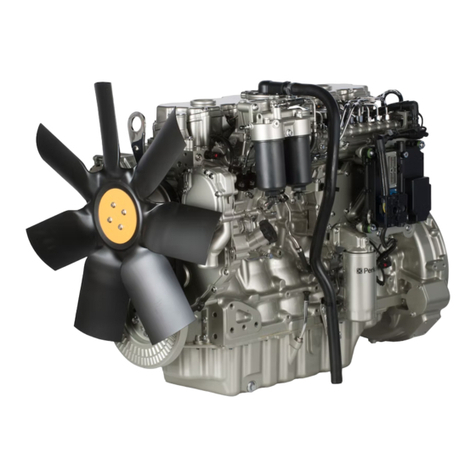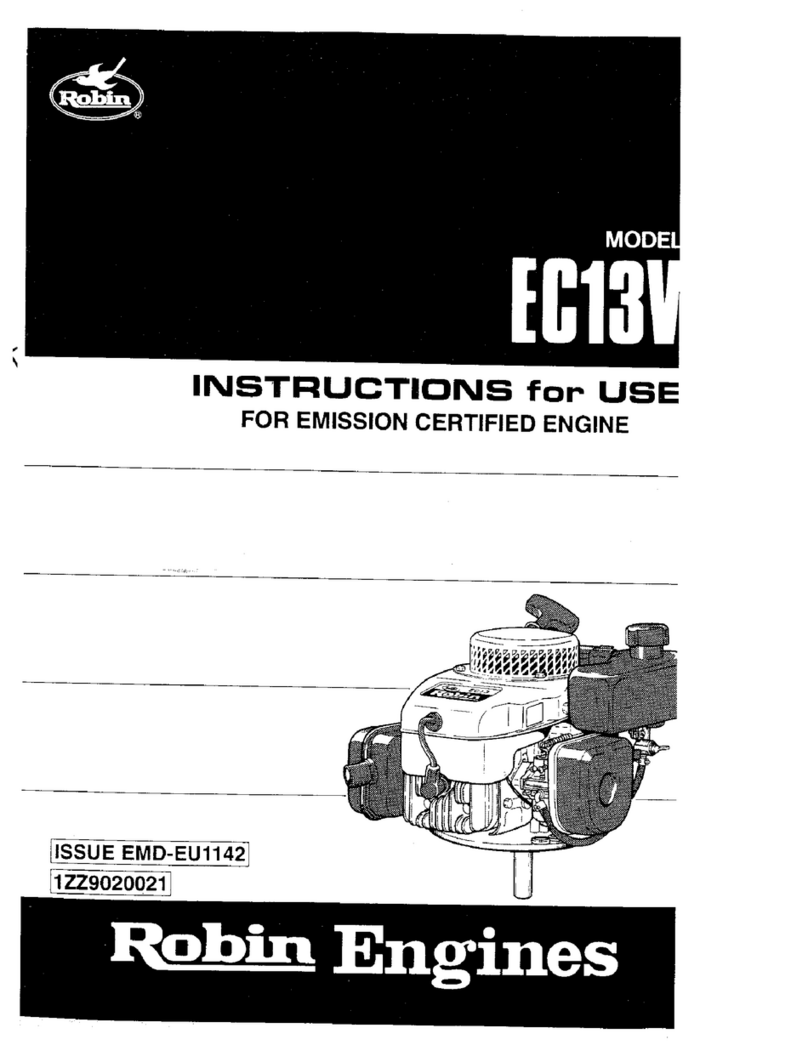
05/99
Printed in England
© Propriety information of Perkins Engines Company Limited, all rights reserved
700 Series
Section 1
6
General information
Safety precautions
These safety precautions are important. You must
referalsotothelocalregulationsin the countryofuse.
Some items only apply to specific applications.
• Always refer to the text of this handbook for
specific warnings and cautions.
• Only use these engines in the type of application
for which they have been designed.
• Do not change the specification of the engine.
• Do not make adjustments that you do not
understand.
• Do not smoke when you put fuel in the tank.
• Clean away fuel which has been spilt. Material
which has been contaminated by fuel must be
moved to a safe place.
•Do not put fuel in the tank while the engine runs
(unless it is absolutely necessary).
•Do not clean, add lubricating oil, or adjust the
engine while it runs (unless you have had the
correct training; even then extreme caution must
be used to prevent injury).
•Ensure that the engine does not run in a location
where it can cause a concentration of toxic
emissions.
•Other persons must be kept at a safe distance
while the engine, auxiliary equipment is in
operation.
•Do not permit loose clothing or long hair near
moving parts.
Warning! Keep away from moving parts during
engine operation. Warning! Some moving parts
cannot be seen clearly while the engine runs.
•Do not operate the engine if a safety guard has
been removed.
•Do not remove the filler cap or any component of
the cooling system while the engine is hot and
while the coolant is under pressure, because
dangerous hot coolant can be discharged.
•Do not allow sparks or fire near the batteries
(especially when the batteries are on charge)
because the gases from the electrolyte are highly
flammable. The battery fluid is dangerous to the
skin and especially to the eyes.
•Disconnect the battery terminals before a repair is
made to the electrical system.
•Only one person must control the engine.
•Ensure that the engine is operated only from the
control panel or from the operator's position.
•If your skin comes into contact with high-pressure
fuel, obtain medical assistance immediately.
•Diesel fuel and lubricating oil (especially used
lubricating oil) can damage the skin of certain
persons. Protect your hands with gloves or a
special solution to protect the skin.
•Do not wear clothing which is contaminated by
lubricating oil. Do not put material which is
contaminated with oil into the pockets.
•Discard used lubricating oil and coolant in
accordance with local regulations to prevent
contamination.
•Ensure that the control lever of the transmission
drive is in the "out-of-drive" position before the
engine is started.
•The combustible material of some components of
the engine (for example certain seals) can
becomeextremelydangerousifitisburned.Never
allow this burnt material to come into contact with
the skin or with the eyes.
•Always use a safety cage to protect the operator
when a component is to be pressure tested in a
container of water. Fit safety wires to secure the
plugs which seal the hose connections of a
component which is to be pressure tested.
•Do not allow compressed air to contact your skin.
If compressed air enters your skin, obtain medical
help immediately.
•Turbochargers operate at high speed and at high
temperatures.Keepfingers,toolsanddebrisaway
from the inlet and outlet ports of the turbocharger
and prevent contact with hot surfaces.
•Some components are not waterproof and should
not be washed with a high-pressure water jet or
steam.
•Fit only genuine Perkins parts.



